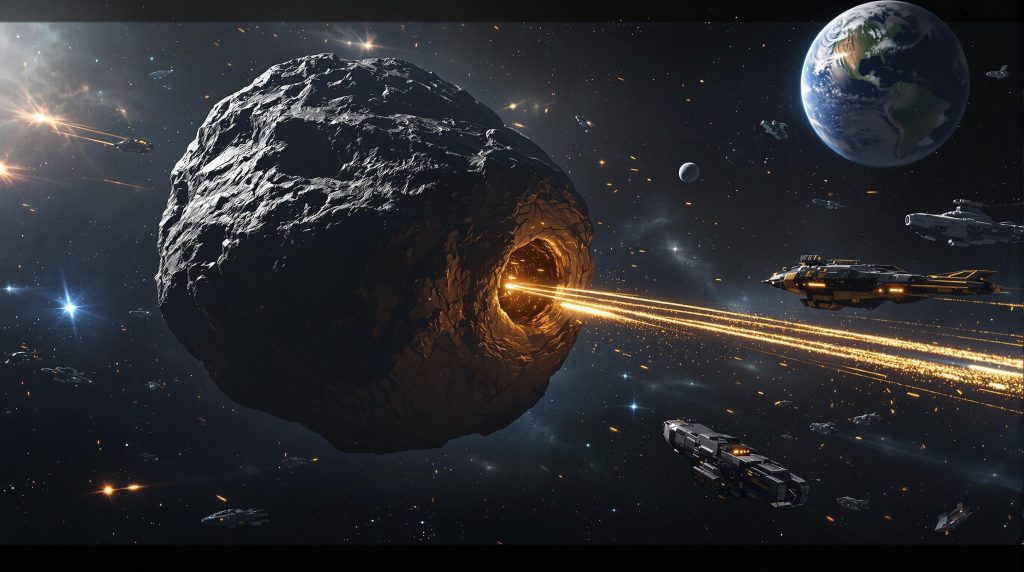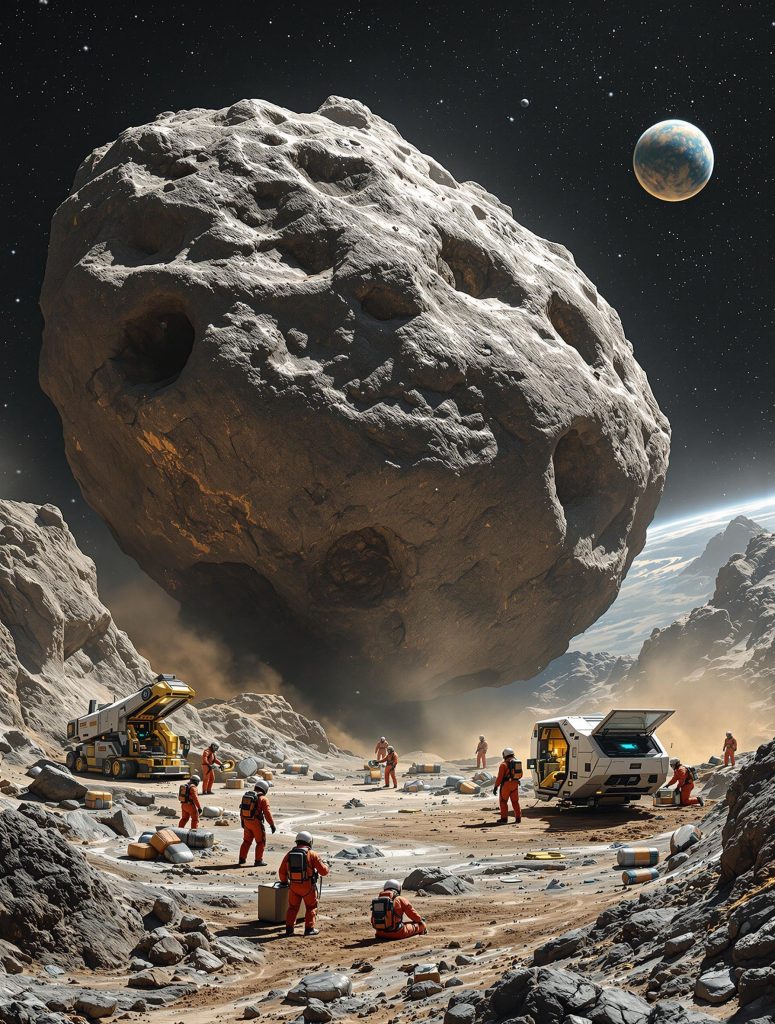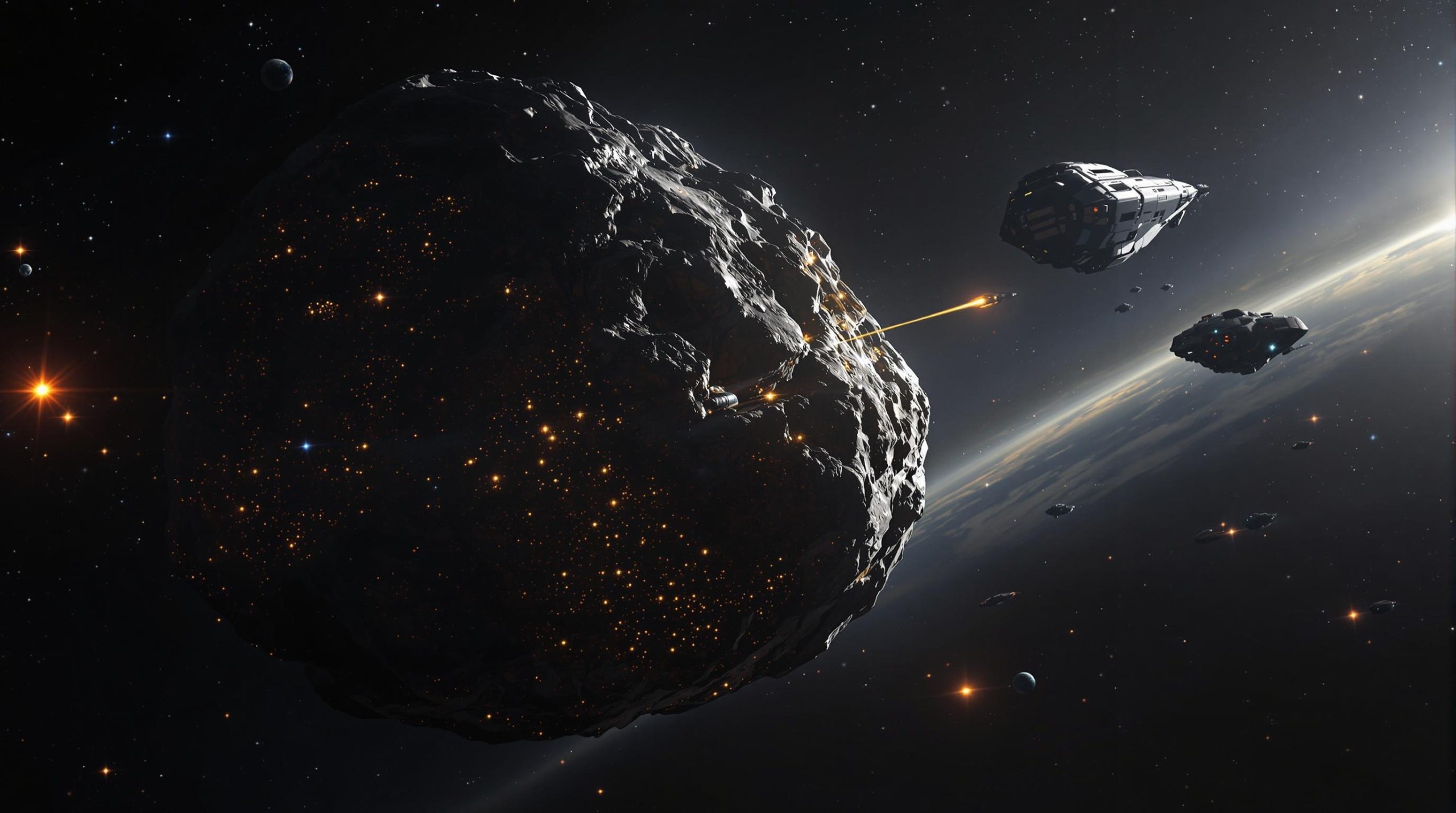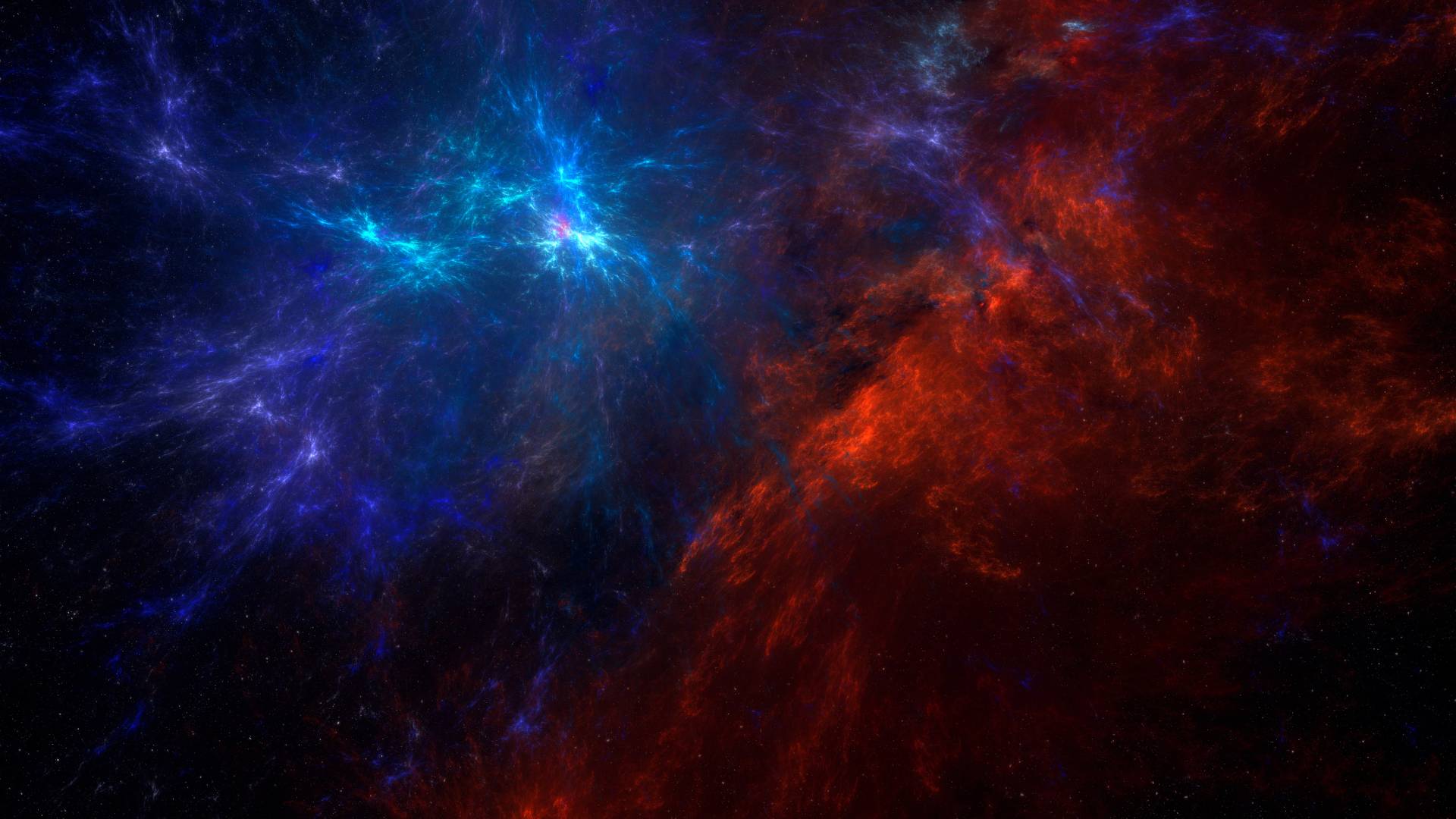Asteroid mining is no longer a concept confined to science fiction. It is rapidly emerging as one of the most exciting and promising developments in the space economy. With advancements in technology and growing interest from private companies and governments, asteroid mining could revolutionize the way we source raw materials and fuel humanity’s future endeavors in space exploration.
What is Asteroid Mining?
Asteroid mining refers to the extraction of valuable minerals and resources from asteroids. These celestial bodies, remnants from the early solar system, are rich in materials such as:
- Metals: Platinum, gold, nickel, and iron.
- Water: Which can be split into hydrogen and oxygen for rocket fuel.
- Rare Earth Elements: Essential for modern electronics and renewable energy technologies.

Why is Asteroid Mining Important?
Asteroid mining has the potential to address critical challenges on Earth and beyond:
- Resource Scarcity: Earth’s natural resources are finite, and asteroid mining can offer an abundant alternative.
- Sustainable Space Exploration: Extracted water and metals could be used to support long-term missions to Mars and beyond.
- Economic Growth: Asteroid mining could create a trillion-dollar industry, fostering innovation and employment.
How Does Asteroid Mining Work?
Identifying Target Asteroids
The first step is to identify asteroids rich in resources. Scientists use telescopes and spacecraft to study near-Earth objects (NEOs). Key targets include:
- C-type Asteroids: Rich in carbon and water.
- S-type Asteroids: Contain metals like iron, nickel, and magnesium.
- M-type Asteroids: Abundant in rare and valuable metals like platinum.
Mining Techniques
Several technologies are under development for asteroid mining, including:
- Robotic Mining: Automated systems that drill and extract materials.
- Laser Mining: Using focused beams to break down asteroid surfaces.
- In-Situ Resource Utilization (ISRU): Using extracted resources directly in space without returning them to Earth.
Transportation Challenges
Transporting mined materials back to Earth or to space outposts is another critical challenge. Companies are exploring reusable spacecraft and advanced propulsion systems to make this process efficient.
The Role of Private Companies in Asteroid Mining
Pioneering Efforts
Private companies are leading the charge in asteroid mining:
- Planetary Resources: One of the first companies to focus on asteroid mining.
- Deep Space Industries: Developing spacecraft and mining technologies.
- Asteroid Mining Corporation (AMC): Aiming to create a sustainable space economy.
Government Collaboration
Governments are collaborating with private companies to regulate and support asteroid mining activities. The U.S. and Luxembourg have passed laws recognizing private ownership of space resources.
The Benefits of Asteroid Mining
- Economic Potential: A single asteroid can hold resources worth billions of dollars.
- Environmental Preservation: Reducing the strain on Earth’s ecosystems by sourcing materials from space.
- Advancing Space Exploration: Enabling long-term missions by providing resources directly in space.

Challenges Facing Asteroid Mining
Asteroid mining presents immense potential but comes with a unique set of challenges. These obstacles must be addressed to make the concept viable both technologically and economically. Below is a deeper dive into the main challenges:
1. Technological Hurdles
- Exploration and Identification:
Finding the right asteroids with valuable resources requires advanced telescopes, sensors, and data analysis tools. Pinpointing near-Earth objects (NEOs) suitable for mining is a complex and costly task. - Mining Equipment:
Developing machinery that can operate in the extreme conditions of space, including microgravity and intense radiation, is a major engineering challenge. Tools must be lightweight yet robust, as transporting heavy equipment is cost-prohibitive. - Resource Extraction:
Unlike mining on Earth, space mining requires innovative methods like robotic mining, laser ablation, or electrostatic extraction to collect resources without human intervention. - Transportation:
Extracted resources must be transported back to Earth or space outposts. This requires efficient propulsion systems and cost-effective spacecraft that can navigate space while minimizing fuel usage.
2. Economic Viability
- High Initial Costs:
The costs of developing, launching, and operating space mining missions are astronomical. For asteroid mining to be profitable, the value of extracted resources must outweigh these expenses. - Market Demand and Supply:
An influx of space-sourced materials like platinum or rare Earth elements could saturate markets, reducing their value. Managing supply chains will be crucial to maintaining economic balance.
3. Legal and Ethical Issues
- Ownership Rights:
International treaties like the Outer Space Treaty of 1967 declare that celestial bodies cannot be claimed by nations or private entities. This creates ambiguity about who owns the resources mined from asteroids. - Regulatory Framework:
There’s no universal legal framework governing asteroid mining. While some countries like the U.S. and Luxembourg have passed laws to support private space mining, global consensus is needed to prevent conflicts. - Ethical Concerns:
Mining space resources raises ethical questions about the exploitation of celestial bodies and the potential for unequal resource distribution, benefiting only a few countries or corporations.
4. Environmental Concerns in Space
- Space Debris:
Mining operations could generate debris, contributing to the already significant issue of space junk. Unregulated activities may create hazards for satellites and other spacecraft. - Asteroid Manipulation Risks:
Altering an asteroid’s trajectory for mining purposes could inadvertently pose a collision risk with Earth or other celestial bodies, creating potential disasters.
5. Political and Social Challenges
- Geopolitical Tensions:
Competition between nations and private companies for space resources could lead to geopolitical tensions. Without proper agreements, there’s potential for conflicts over mining rights and territories. - Public Perception:
Space mining may be viewed skeptically by the public due to concerns about safety, ethical implications, and the prioritization of space ventures over pressing issues on Earth.
6. Sustainability of Space Activities
- Long-Term Impact:
The long-term sustainability of space mining operations is uncertain. Mining celestial bodies could potentially disrupt the balance of the solar system or deplete valuable resources for future generations. - Energy Requirements:
Space mining missions demand immense energy resources, both for extraction and transportation. Developing renewable and efficient energy systems is critical.
Future Prospects of Asteroid Mining
Asteroid mining is still in its infancy, but its potential is vast. In the next few decades, we may witness:
- Space Factories: Where resources are processed directly in space.
- Interplanetary Economy: Fueling space exploration and settlement.
- Resource Abundance: Reducing global conflicts over scarce materials.
Conclusion
Asteroid mining represents the next frontier in the space economy, offering solutions to Earth’s resource challenges while driving innovation and exploration. Although there are hurdles to overcome, the possibilities it presents are too significant to ignore. As technology evolves and international collaboration grows, asteroid mining could redefine humanity’s relationship with space and its resources.
For more insights into the wonders of space exploration, visit Spaceyv.com!



